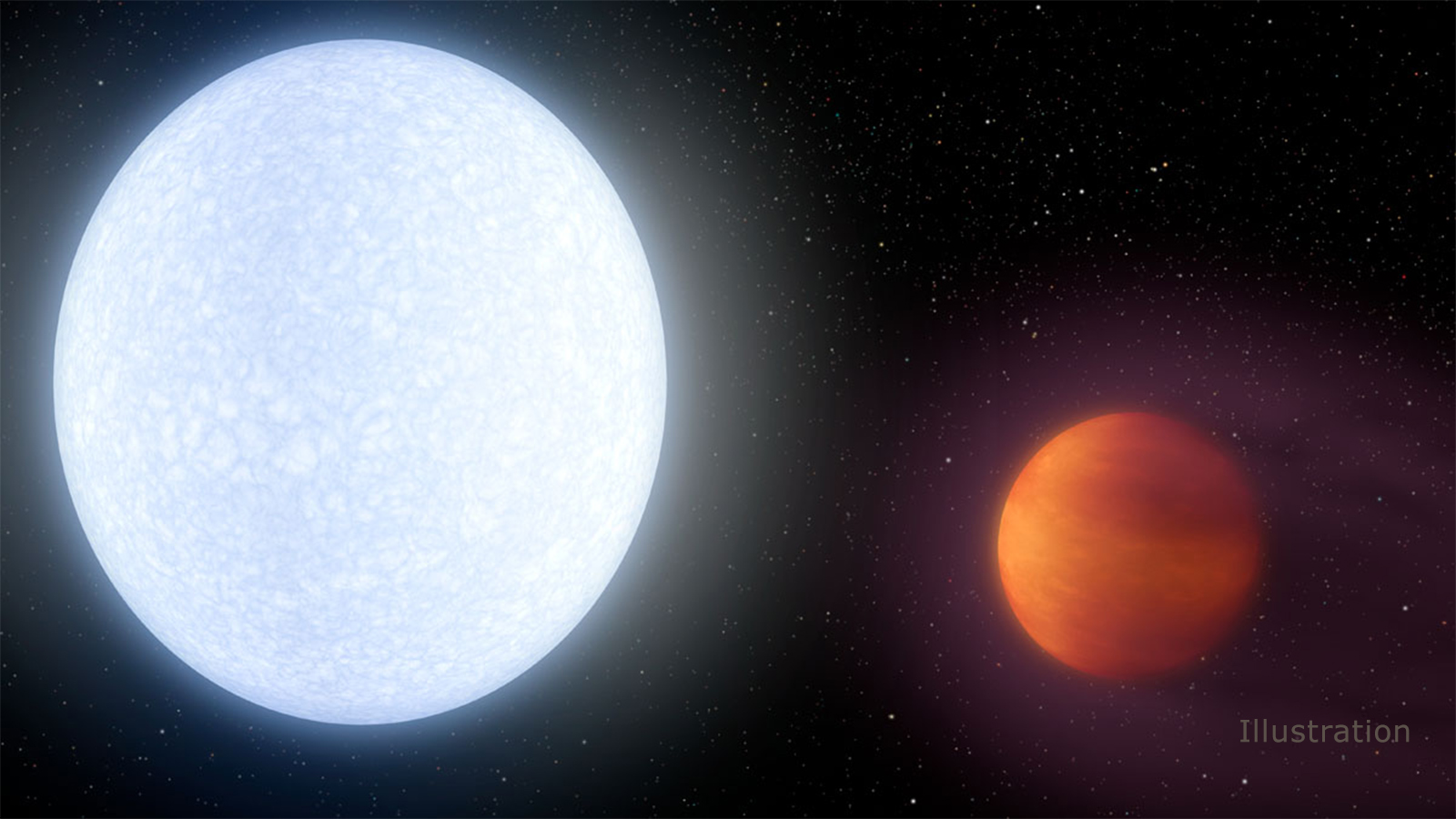Scientists have found the hottest – and most bizarre – exoplanet.
Found in the constellation Cygnus, some 650 light years away from Earth, this giant planet is nearly twice the size of Jupiter, and has a dayside temperature hotter than most stars, thousands of degrees warmer than any other exoplanet discovered so far, CNN reports.
Named KELT-9b, the planet is very close to its host star, KELT-9, that its orbit lasts just 1.5 days. The star is two times hotter and 2.5 times bigger than the solar system’s sun, rotating 50 times faster. It’s so fast that the poles of the star have flattened out, making the equator bulge out, and putting it on the list of hottest host star of any exoplanets astronomers have recorded.
Scott Gaudi, professor of astronomy at the Ohio State University and lead author on the study, says that the temperature and size of KELT-9 would make it look light blue to human eyes, and its temperature puts in in the hottest class A and B stars.
Because of the star, KELT-9b is constantly hit with ultraviolet and high-energy radiation, causing the planet to evaporate at unknown speeds. This, in turn, creates a puffy, balloon-like cloud of helium and hydrogen, with what scientists believe is a comet-like tail trailing it in orbit.
The planet also orbits perpendicular to the star, moving around the poles rather than the equator. Scientists also think that this orbit appears to like a spinning top, moving closer and closer.
As a planet, there are two outcomes for KELT-9b, neither of which are pretty. Scientists say that it will either evaporate when the star cools down, or be swallowed whole by the star when it grows in size.
Because of KELT-9’s brightness, Gaudi says it can be observed from space using telescopes like the Hubble, Spitzer, TESS and the currently under construction James Webb Space Telescope.
Researchers are currently working to learn more about the atmospheres of other planets, and how they work under extreme conditions.
The study was published in the journal Nature.
























